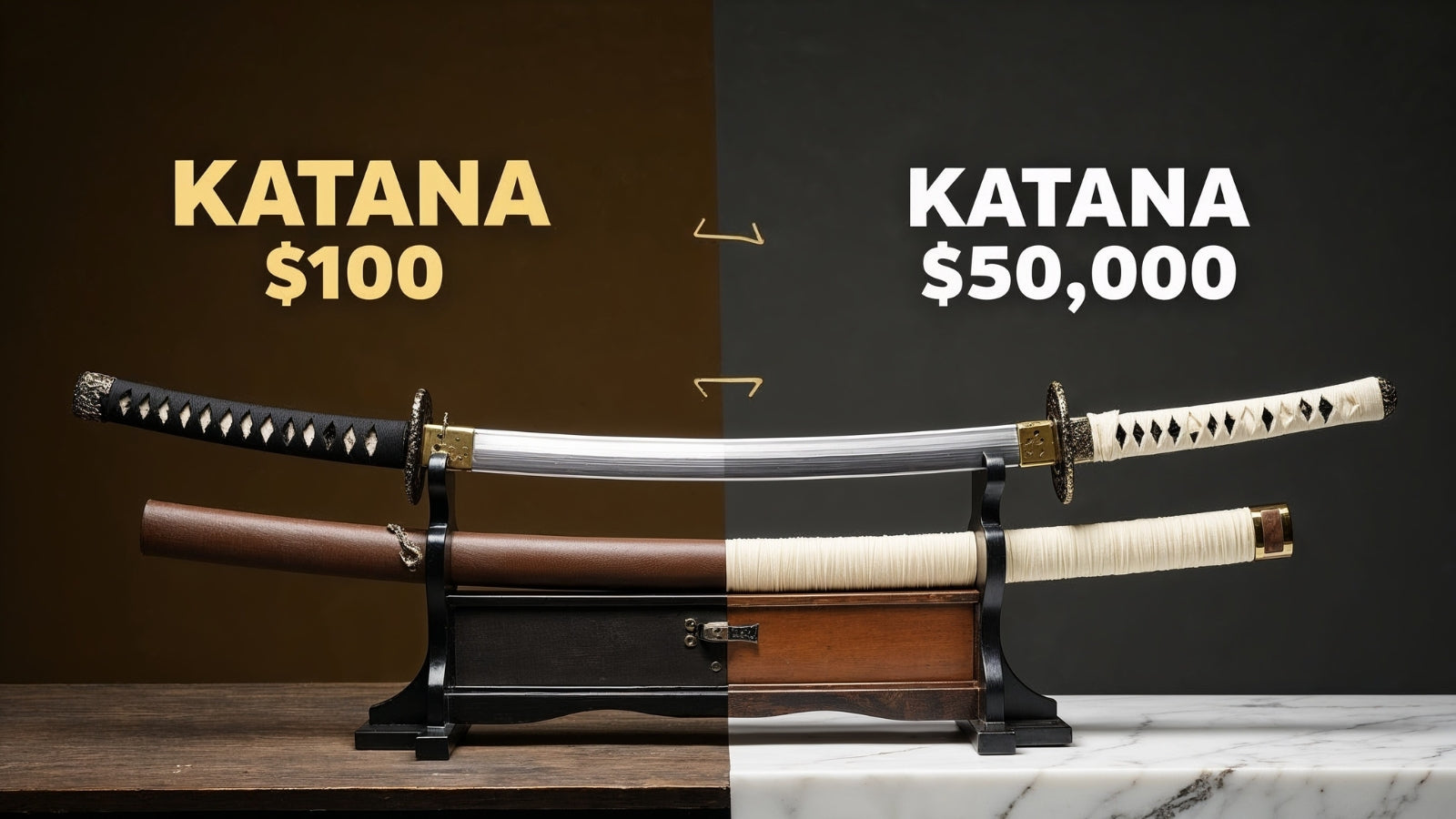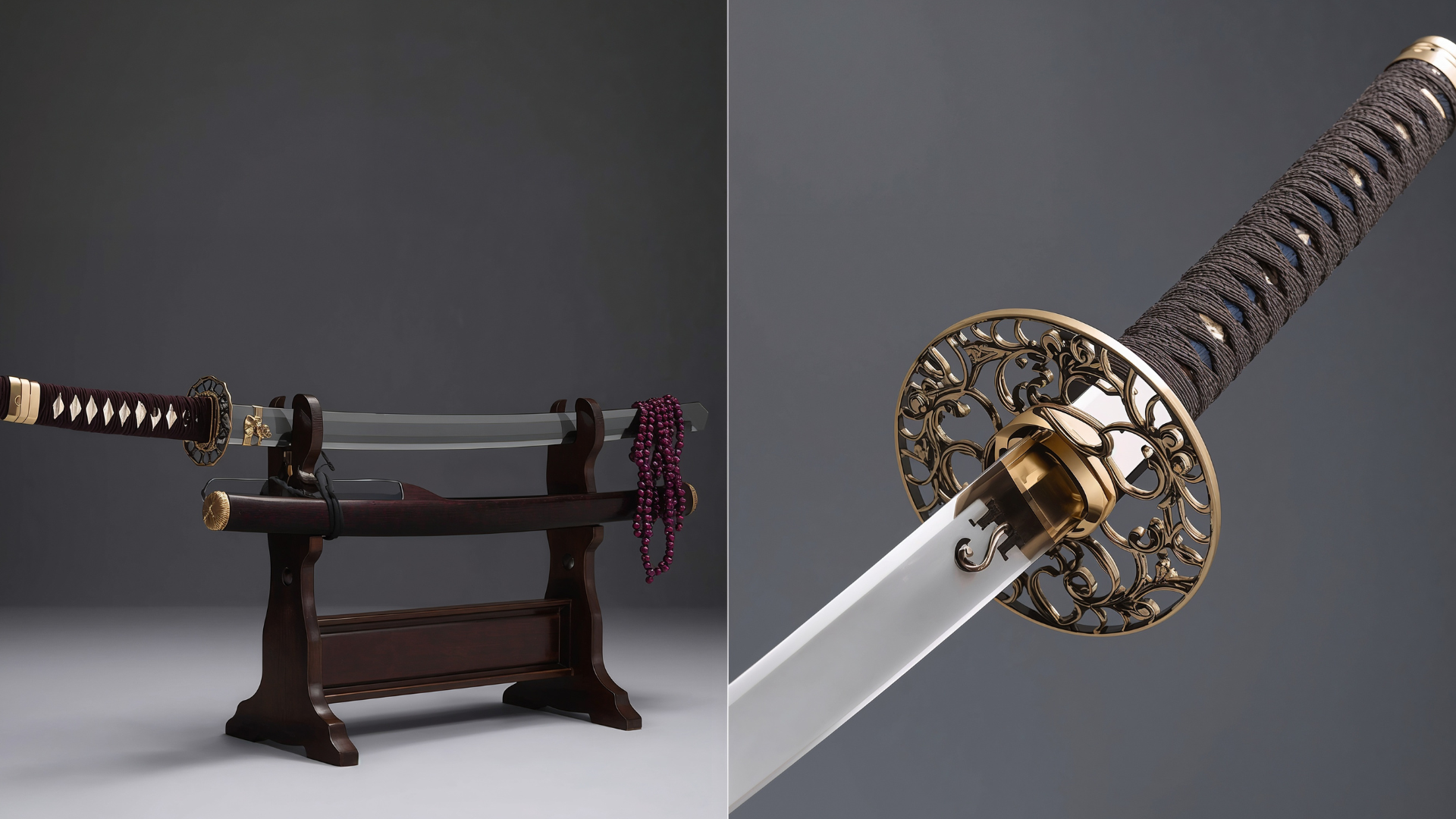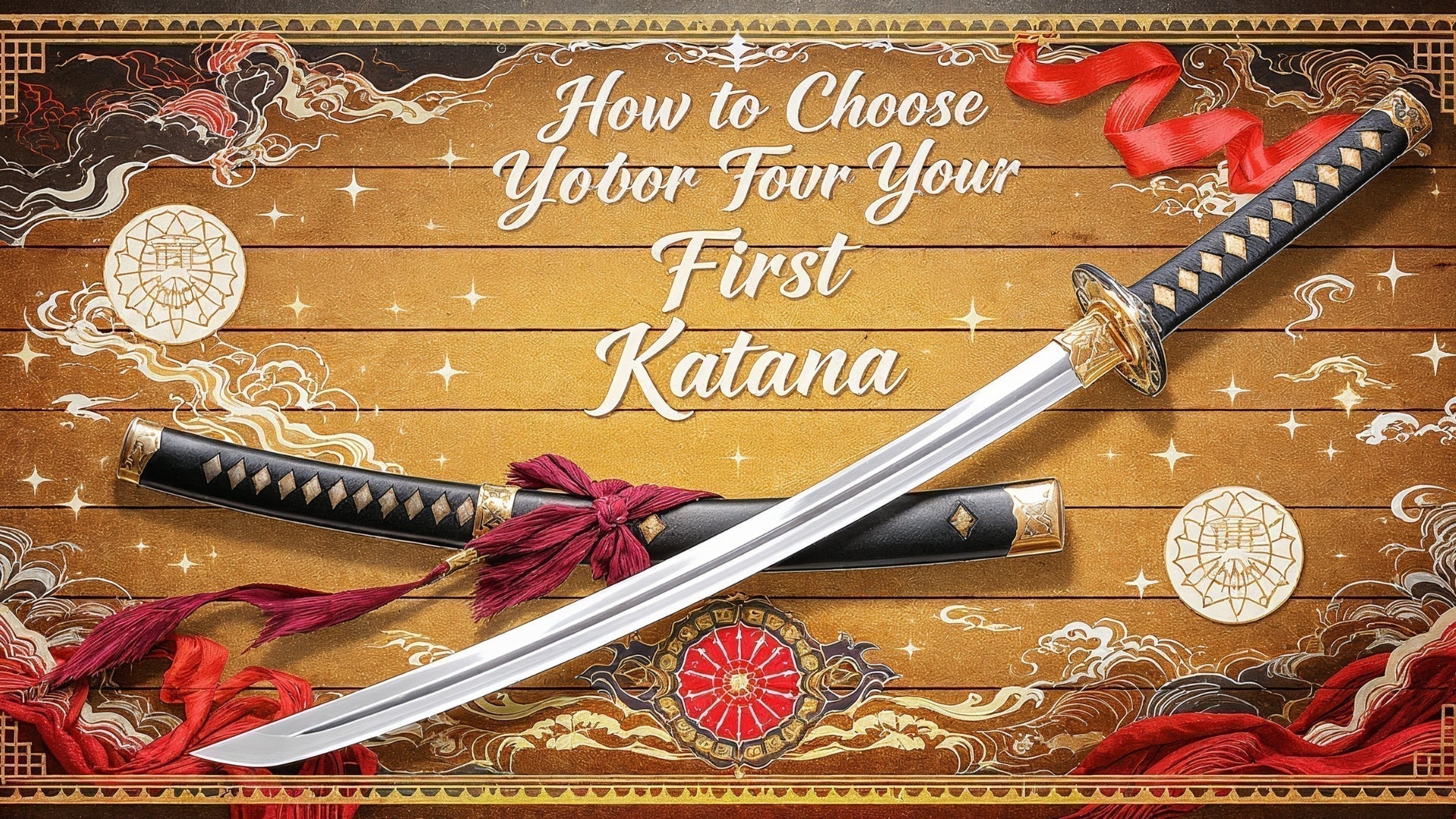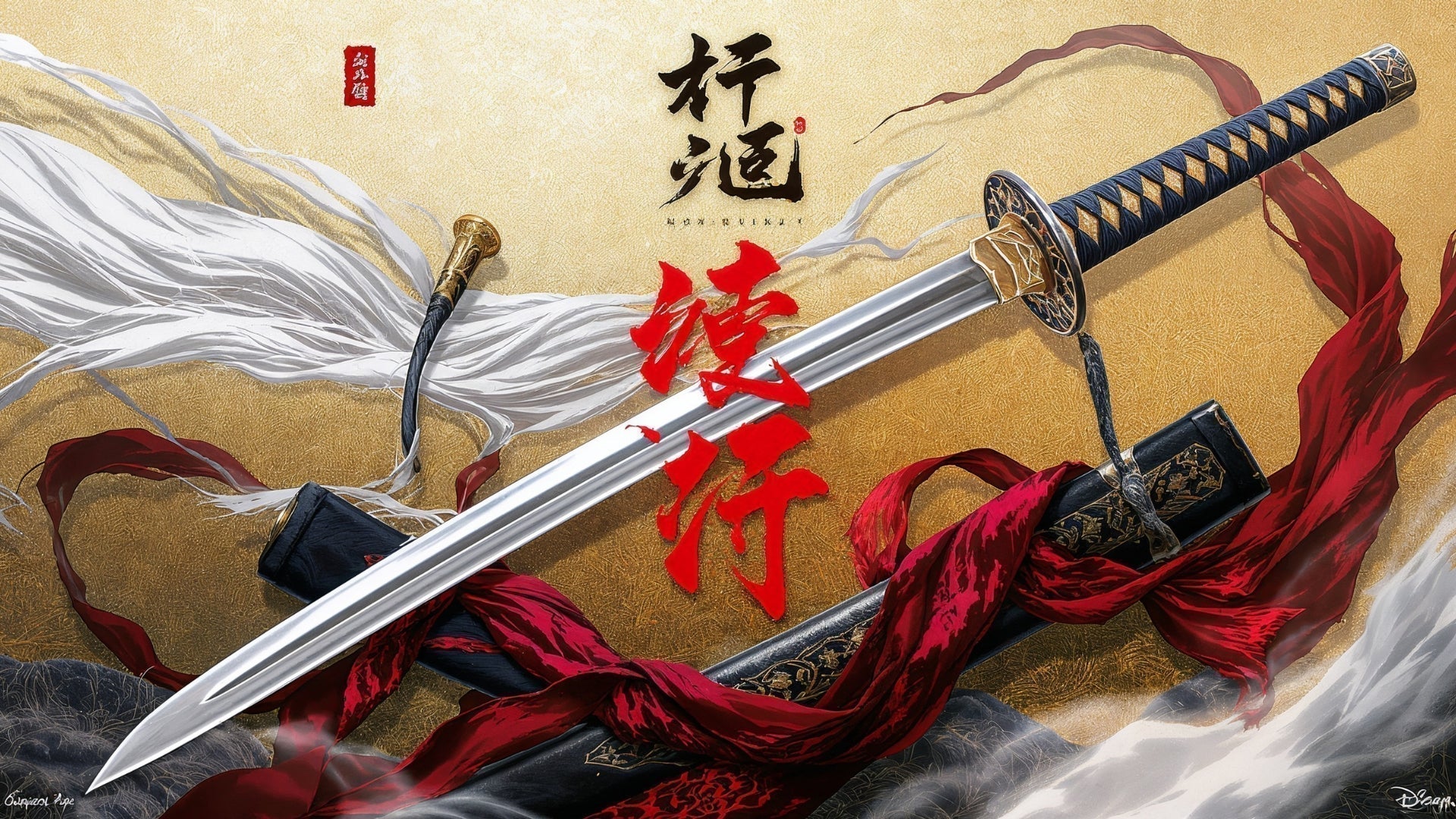From decorative blades to master-crafted heirlooms, the price of a real katana varies widely. But what truly defines an authentic katana, and why do prices range from $100 to over $10,000? This comprehensive guide will help you navigate the costs and understand what you’re really paying for.
The Truth Behind the Term “Real Katana”
Not all katanas are created equal. When people ask, “how much does a real katana cost,” they often mean a sword that is both functional and traditionally made, not a decorative replica.
Here are the three main categories:
-
Decorative katana: Non-functional, often stainless steel, made for display only.
-
Functional katana (shinken or iaitō): Forged from carbon steel, made for practice or cutting.
-
Traditional Japanese katana: Forged using historical techniques and materials, often by licensed smiths.

Katana Price Ranges Explained
Here’s a breakdown of what you can expect to pay depending on the type and purpose of the blade:
🔹 $50–$200: Decorative Replicas
-
Often made of stainless steel
-
Cannot be sharpened safely
-
Used for cosplay, home decor
-
Typically mass-produced
🔹 $200–$1,000: Entry-Level Functional Blades
-
Made from 1045 to 1060 high-carbon steel
-
Suitable for light cutting and martial arts practice
-
Hand-forged in small batches, mostly outside Japan
-
Limited polish and aesthetic detail
🔹 $1,000–$3,000: Mid-Range Functional or Collectible Katanas
-
Often made from 1095 carbon steel or folded steel
-
Differentially hardened with visible hamon
-
Decent polish, customizable fittings
-
May be forged by experienced smiths in Japan or China
🔹 $3,000–$10,000+: High-End or Japanese Nihonto
-
Forged in Japan using tamahagane steel
-
Produced by licensed swordsmiths (Tosho)
-
Accompanied by NBTHK certification
-
Includes handcrafted koshirae (mountings)
🔹 $10,000–$50,000+: Antique or Master-Level Blades
-
Historic pieces from Muromachi, Edo, or earlier periods
-
Often attributed to famous smiths
-
Sold with full documentation and certificates
-
Collected as cultural treasures and investments

Key Factors That Affect Katana Pricing
Understanding what influences the price helps you assess whether you're getting fair value. Here are the core elements:
1. Steel Type and Quality
-
Tamahagane: Traditional Japanese steel, rare and expensive.
-
High-carbon steel (1045, 1060, 1095): Common in functional katanas.
-
Spring steel (e.g., T10): Durable and flexible.
-
Stainless steel: Inexpensive but non-functional.
2. Forging Techniques
-
Hand-forged vs. machine-made: Labor-intensive forging drives up cost.
-
Folded steel (hada): Improves strength and aesthetics.
-
Differential hardening: Creates the iconic hamon (temper line).

3. Polish and Finish
-
True katana polishing is a specialized art, revealing the steel’s inner beauty.
-
A professional polish can take 40–60 hours and add thousands to the price.
4. Koshirae (Mountings)
-
High-end katanas come with ornate hand-crafted fittings: tsuka (handle), tsuba (guard), saya (scabbard), and sageo (cord).
-
Materials like buffalo horn, ray skin, and hand-carved iron or brass elevate value.

5. Origin and Smith
-
Japanese-forged blades are subject to strict regulations.
-
Only licensed swordsmiths can produce nihonto.
-
Renowned smiths like Yoshindo Yoshihara or Gassan Sadatoshi command high prices.
Table: Katana Type vs. Price and Purpose
| Type | Price Range | Functional? | Forged? | Recommended For |
|---|---|---|---|---|
| Decorative Replica | $50–$200 | ❌ | ❌ | Display, Cosplay |
| Entry-Level Functional | $200–$1,000 | ✅ | ✅ | Beginners, Light Cutting |
| Mid-Range Functional | $1,000–$3,000 | ✅ | ✅ | Martial Artists, Collectors |
| High-End Japanese Katana | $3,000–$10,000+ | ✅ | ✅ | Advanced Collectors, Iaido |
| Antique or Master Blades | $10,000–$50,000+ | ✅ | ✅ | Investors, Museums |
Should You Buy a Cheaper Katana?
It depends on your purpose. Here’s a quick guide:
✅ Good reasons to buy an affordable katana:
-
You’re a beginner in martial arts or tameshigiri
-
You want an aesthetic piece for your home
-
You’re experimenting with blade styles
❌ Reasons to avoid budget blades:
-
You need long-term durability
-
You want traditional forging and polish
-
You’re expecting resale value or authenticity

Red Flags When Shopping for a Katana Online
Beware of misleading descriptions. “Real katana” is often misused.
🚩 Watch out for:
-
Listings with vague steel types or no specs
-
Phrases like “battle ready” without testing proof
-
No mention of tang (should be full tang!)
-
No close-up photos of hamon or hada
-
Too-good-to-be-true pricing
Always request:
-
Photos of the nakago (tang)
-
Steel type and hardness specs
-
Seller history and reviews
Choosing a Katana Based on Your Use
Not every sword suits every purpose. Choose based on what you intend to do:
-
Martial arts practice: Balance, sharpness, and safety matter. A 1060 or 1095 steel blade is ideal.
-
Display and collection: Focus on aesthetic value, mountings, and polish.
-
Cutting tests (tameshigiri): Seek heavier blades with excellent edge retention.
-
Cultural appreciation: Go for traditionally forged nihonto with certification.
From Steel to Soul: The Katana's Journey
Each katana begins as raw steel and ends as a bearer of history and purpose. Its creation involves:
-
Smelting and folding to purify the steel
-
Shaping and quenching to harden the edge
-
Polishing and mounting to bring beauty to the blade
The journey reflects the spirit of the smith and the philosophy of Japanese martial culture: harmony between form and function, precision and poetry.

Why Japanese Katanas Are So Expensive
A true nihonto (Japanese-made katana) is not just a weapon, it’s a piece of cultural heritage. Reasons for the price include:
-
Licensing process and apprenticeship (10+ years)
-
Tamahagane is rare and expensive to produce
-
Traditional methods limit output (only a few blades per month)
-
NBTHK or NTHK certification is required for evaluation

The Investment Value of Authentic Katanas
Beyond their function and craftsmanship, some katanas, especially antique and certified nihonto, carry real investment potential. Just like fine art, rare swords often increase in value over time, especially when:
-
Accompanied by NBTHK authentication
-
Linked to a renowned smith
-
Maintained in excellent condition
-
Part of a known historical lineage
Collectors and museums pay top dollar for historical pieces, and auction prices for exceptional katanas have reached tens of thousands of dollars.
The Emotional Connection: Why People Pay More
Some buyers are drawn to the katana not just for its sharpness or polish, but for what it represents:
-
A lifelong connection to martial arts
-
A link to ancestral heritage
-
A symbol of discipline, focus, and honor
For these collectors, the katana becomes more than an object, it’s a reflection of identity, passion, and respect for a centuries-old tradition.
Comparing Katana Prices by Region
Prices can also vary depending on where the katana is forged. While Japan remains the pinnacle of traditional craftsmanship, several other countries now produce quality swords:
-
Japan: Highest authenticity, strict regulation, premium prices
-
China: Major hub for functional swords at lower cost
-
USA: Independent smiths with custom work and mid-to-high range pricing
-
Europe: Boutique swordsmiths focused on quality over quantity
Understanding regional differences helps buyers avoid overpriced replicas and make informed purchases.
Modern vs. Traditional Katana: Which Is Right for You?
A modern katana may be made with CNC machines or blended steel, while traditional nihonto follow centuries-old techniques.
-
Modern katanas offer durability and affordability
-
Traditional katanas reflect cultural heritage, often for display or ceremonial use
Consider your priorities: are you seeking a blade for cutting practice, display, or investment?
Understanding Custom Katana Orders
One often-overlooked aspect of katana pricing is the custom-made route. Enthusiasts sometimes choose to have a sword crafted to personal specifications by a smith, either Japanese or international.
Factors that affect pricing for a custom katana include:
-
Blade length and curvature (sori)
-
Steel selection: tamahagane, T10, 1095, etc.
-
Mounting customization: engraving, lacquered saya, hand-carved fittings
-
Symbolic additions or unique engravings
-
Delivery time: custom swords may take 3–12 months to complete
Prices for bespoke katana commissions typically start around $2,000 and can go well over $20,000 depending on the smith’s prestige.

What Influences Resale Value of a Katana?
If you're thinking about your sword as a long-term asset, understanding what influences resale value is key:
-
Certificate of authenticity (especially NBTHK/NTHK documents)
-
Smith's recognition in sword appraisal circles
-
Rarity of blade geometry, signature, or forging style
-
Provenance (owner history, especially if historically linked)
-
Condition of blade, polish, and mountings
Collectors may also value swords from historical reenactments, martial arts grandmasters, or even cinematic replicas with documented lineage.
FAQ: Common Questions About Katana Prices
How much should I spend on my first katana?
$300–$700 is ideal for beginners who want a safe, functional blade.
Is a real hamon better than an etched one?
Yes. A real hamon is formed by differential hardening and indicates superior forging.
What’s the best steel for a cutting katana?
1095 or T10 high-carbon steel offers excellent sharpness and durability.
Can I import a katana from Japan?
Yes, but expect strict export rules and possible customs duties.
Do antique katanas need special care?
Absolutely. They should be stored in a humidity-controlled space and cleaned regularly.
Are handmade katanas always better?
Not always. A high-quality machine-made blade may outperform a poorly made handmade one.
How can I verify a katana’s authenticity?
Look for NBTHK or NTHK certification, a visible hamon, and records of the smith.
Final Thoughts: More Than a Price Tag
A katana’s cost reflects far more than its cutting power. It represents craftsmanship, tradition, and respect for an artform that’s centuries old.
Whether you spend $300 or $30,000, the real value lies in choosing a blade that aligns with your purpose, your ethics, and your appreciation for the samurai legacy.
In the end, a katana isn’t just a weapon, it’s a bridge between the past and the present.




Share:
Discovering the Hattori Hanzo Sword: The Blade Behind the Legend
Where to Buy a Real Katana?